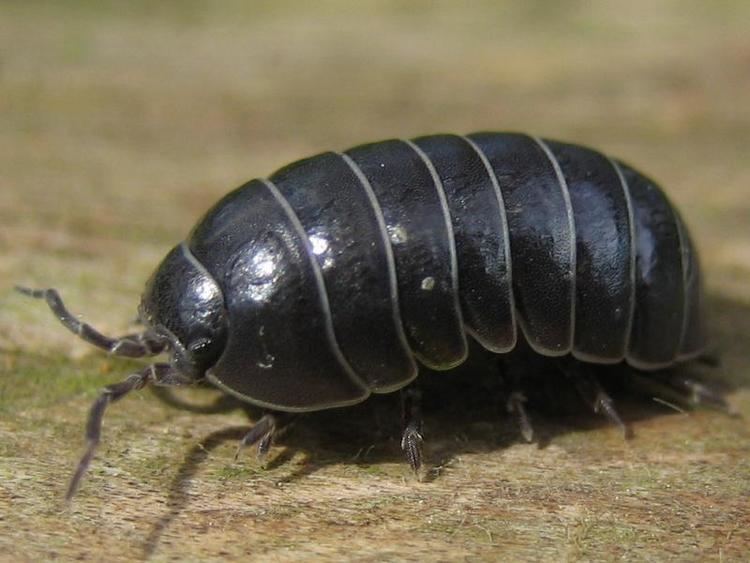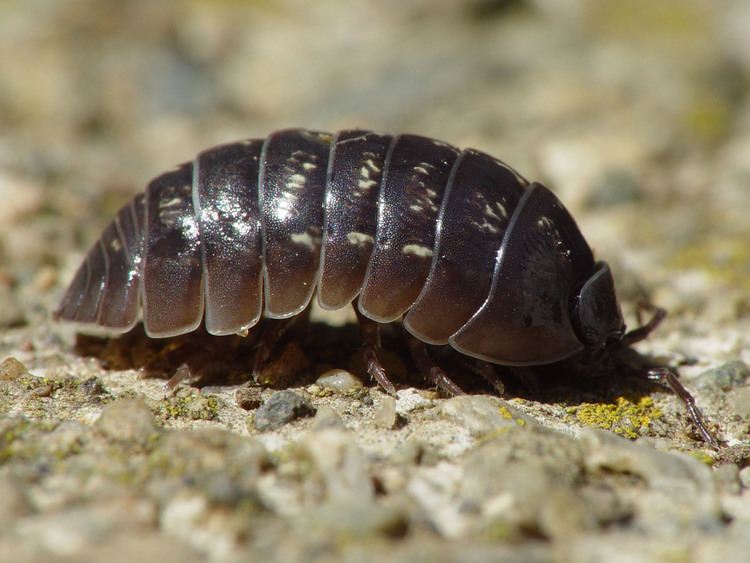Rank Species | Subphylum Crustacea Suborder Oniscidea Genus Armadillidium Higher classification Armadillidium | |
 | ||
Similar Armadillidium, Porcellio scaber, Isopods, Pill bugs, Woodlouse | ||
Intelligence of an insect armadillidium vulgare
Armadillidium vulgare, the (common) pill-bug, (common) pill woodlouse, roly-poly, doodle bug, or carpenter, is a widespread European species of woodlouse. It is the most extensively investigated terrestrial isopod species.
Contents
- Intelligence of an insect armadillidium vulgare
- How to make a roly poly farm using armadillidium vulgare for composting
- Description
- Ecology
- Distribution
- Relationships with humans
- References

How to make a roly poly farm using armadillidium vulgare for composting
Description

Armadillidium vulgare may reach a length of 18 millimetres (0.71 in), and is capable of rolling into a ball when disturbed; this ability, along with its general appearance, gives it the name pill-bug and also creates the potential for confusion with pill millipedes such as Glomeris marginata. It can be distinguished from Armadillidium nasatum and Armadillidium depressum, the only other British species in the genus, by the gap that A. nasatum and A. depressum leave when rolling into a ball; A. vulgare does not leave such a gap.
Ecology

Armadillidium vulgare is able to withstand drier conditions than many other woodlouse species, and is restricted to calcareous soils or coastal areas. It feeds chiefly on decaying plant matter, but also grazes lichens and algae from tree bark and walls.

It is able to regulate its temperature through its behaviour, preferring bright sunshine when temperatures are low, but remaining in shadow when temperatures are high; temperatures below −2 °C (28 °F) or above 36 °C (97 °F) are lethal to it. A. vulgare is less susceptible to cold during the night, and may enter a state of dormancy during the winter in order to survive temperatures that would otherwise be lethal.
Distribution

The native distribution of A. vulgare ranges across Europe, especially in the Mediterranean Basin. In the United Kingdom, A. vulgare is very common in southern and eastern England, but is more confined to coastal areas in the north. Similarly, in Ireland, A. vulgare is common in the south and east, but rarer in the north and west.
A. vulgare has also been introduced to many locations in North America, where it may reach population densities of up to 10,000 individuals per square metre. It is now one of the most abundant invertebrate species in California coastal grassland habitats. It has also been introduced, to a lesser extent, to sites across the world.
Relationships with humans
Because of their unusual yet non-threatening appearance, some Armadillidium vulgare are kept as pets in areas throughout the U.S., typically among children. Among adults, they are often seen as unwanted (but essentially harmless) home pests. Keeping a pet pill bug requires a very moist habitat with limited light and lots of decaying plant matter. They can often live up to three years.
